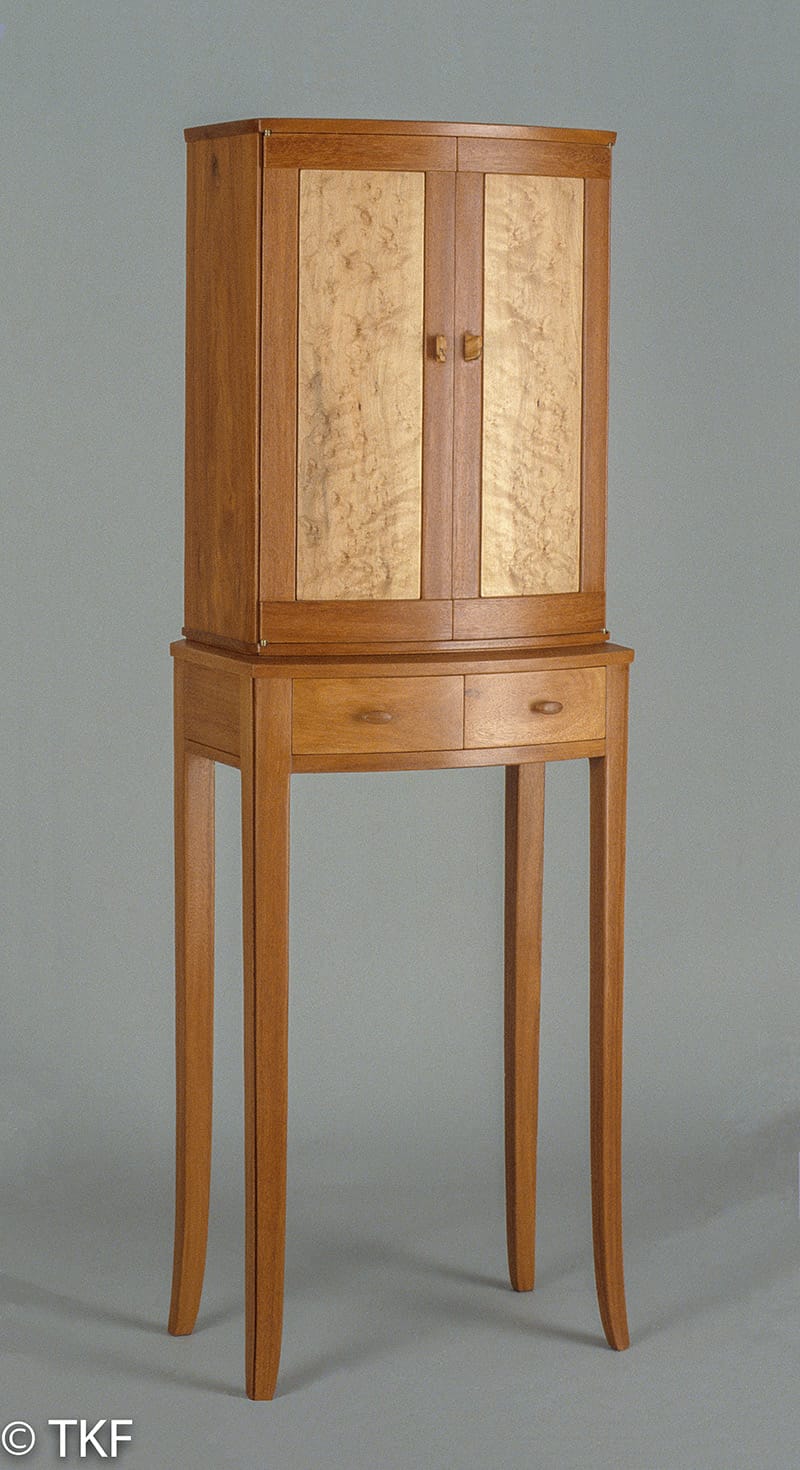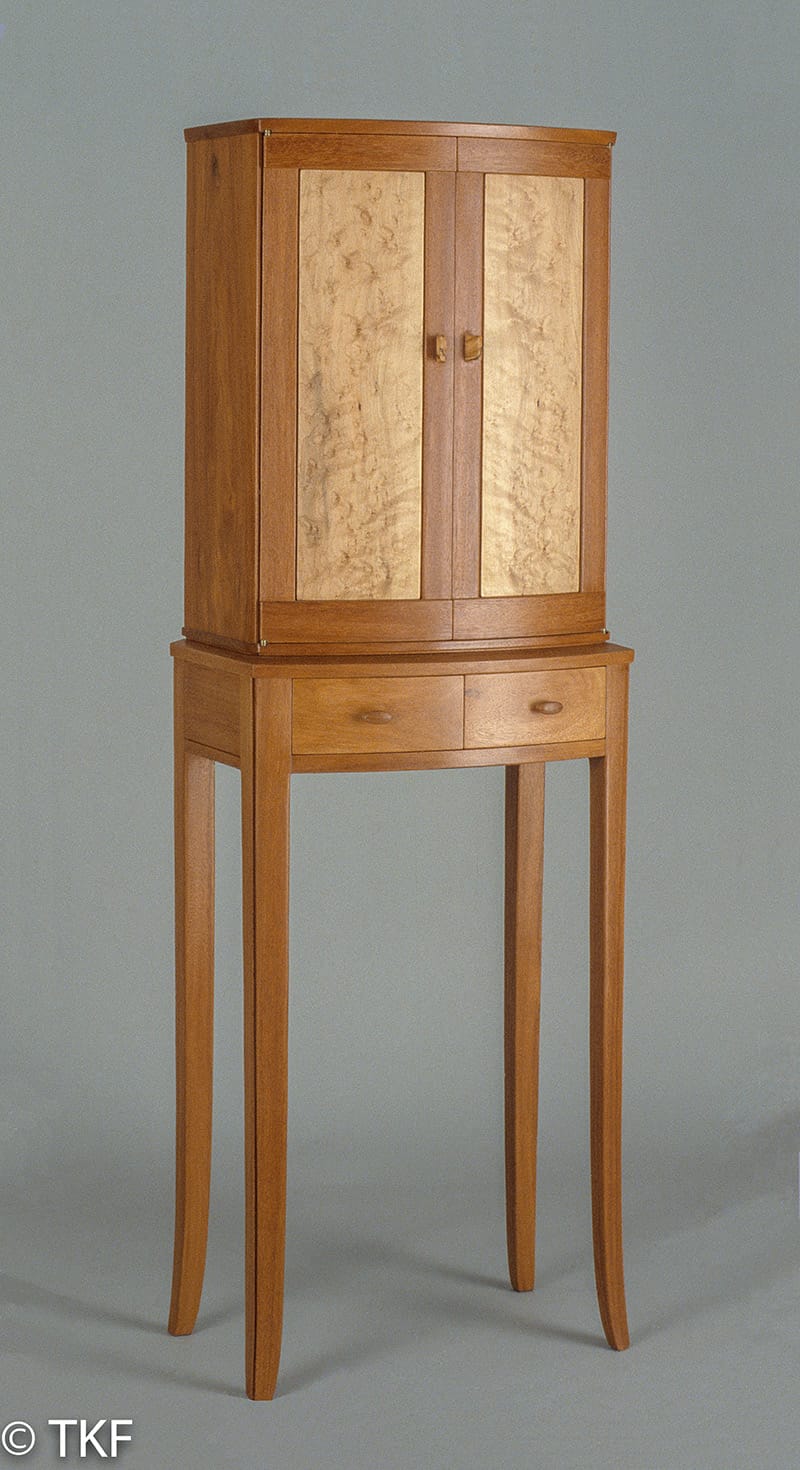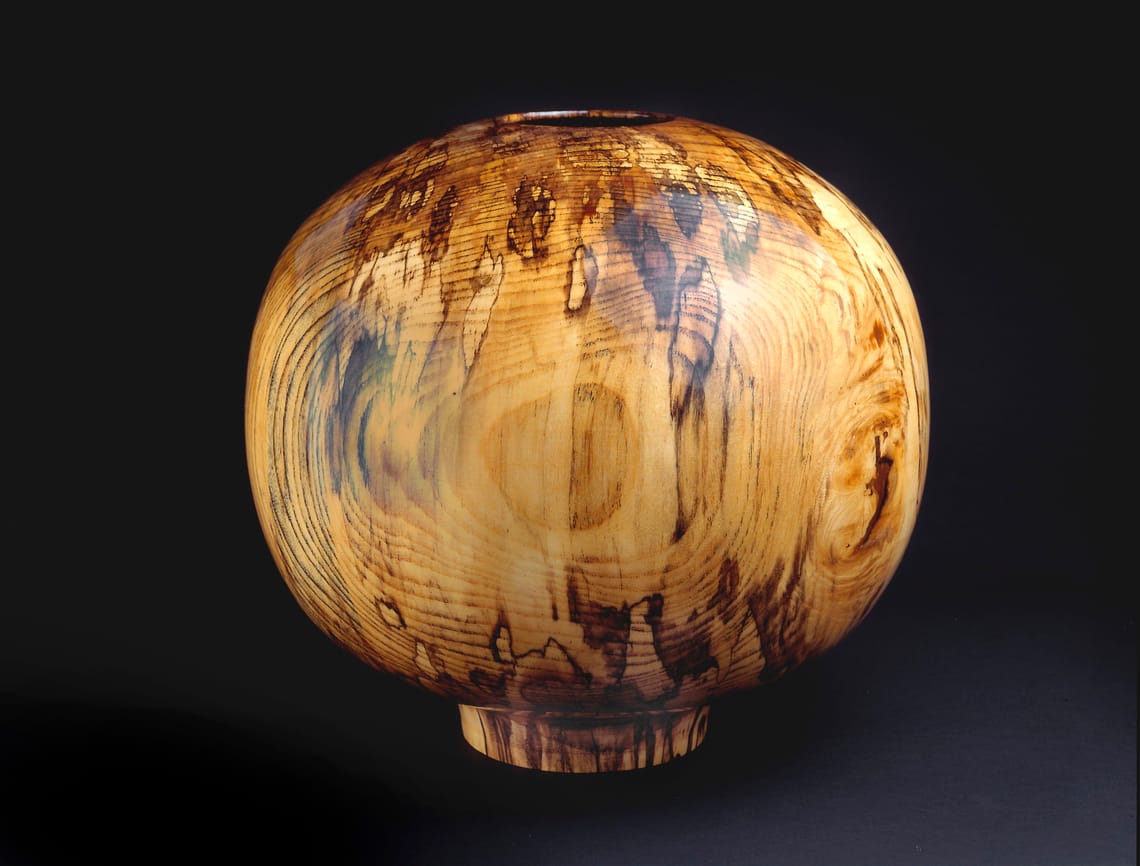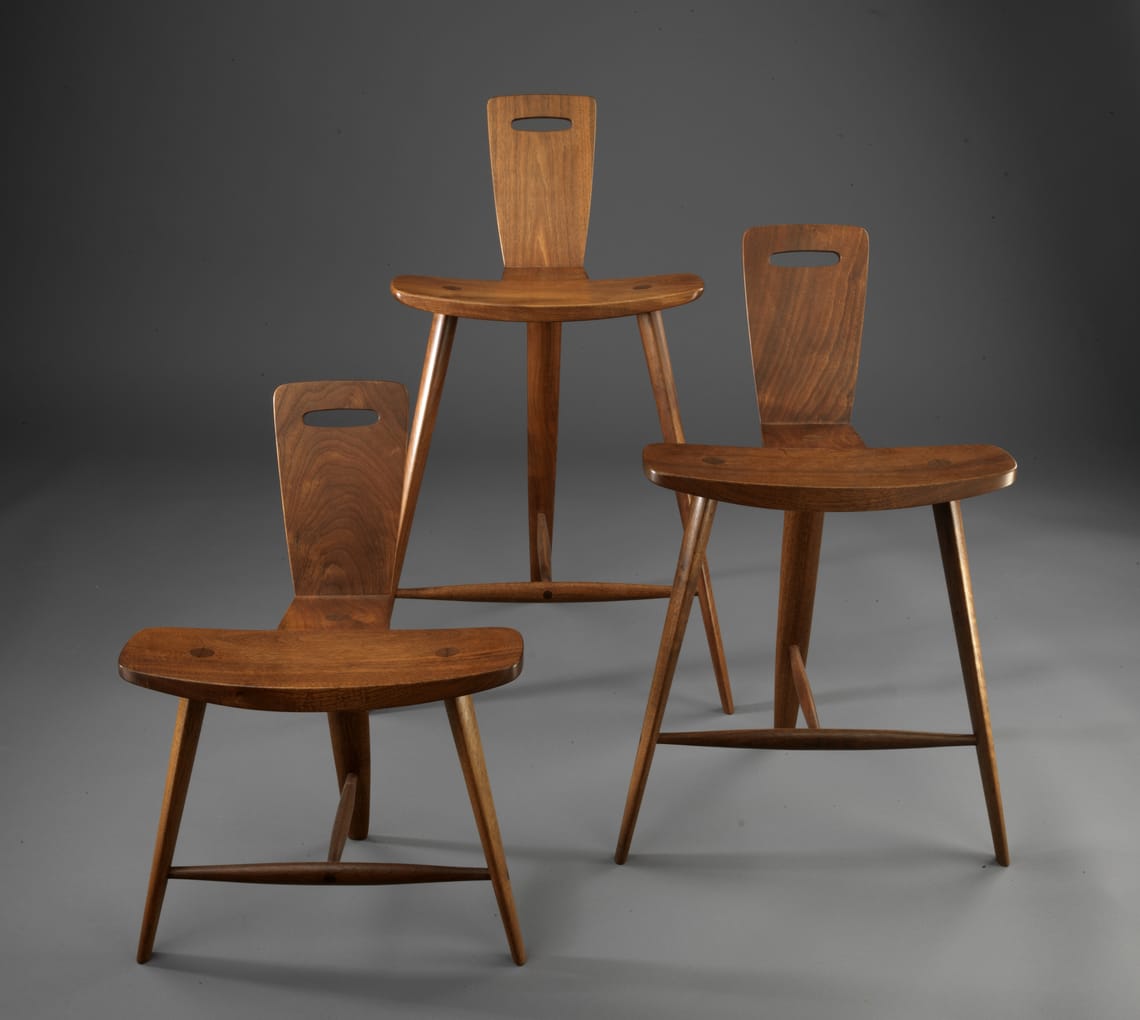Life and Legacy of James Krenov


James Krenov's life was a remarkable journey from humble beginnings to becoming a master craftsman. His work and teachings left an indelible mark on the world of fine woodworking.
Early Years and Russian Heritage
James Krenov was born in 1920 in Uelen, Russia. His Russian parents instilled in him a deep appreciation for craftsmanship from an early age. Growing up in a remote village, Krenov developed a keen eye for natural beauty and a strong connection to materials.
As a young man, he moved to Seattle, Washington. There, he began to explore his passion for woodworking. The skills he learned during this time would shape his future career.
World War II interrupted Krenov's early pursuits. After serving, he returned with a renewed focus on honing his craft.
Journey to Crafting Masterpieces
Krenov's path to mastery was unconventional. He studied in Sweden, learning from some of Europe's finest craftsmen. This experience deeply influenced his approach to woodworking.
He became known for his small, elegant cabinets. These pieces showcased his attention to detail and respect for materials. Krenov's work caught the eye of collectors and museums worldwide.
His books, starting with "A Cabinetmaker's Notebook," inspired countless woodworkers. These writings shared not just techniques, but a philosophy of craftsmanship.
Founding the Krenov School
In 1981, Krenov founded the Fine Woodworking Program at the College of the Redwoods in California. This school became a mecca for aspiring woodworkers.
Students came from around the world to learn Krenov's methods. He taught them to listen to the wood and work with precision and care.
Even after retiring, Krenov continued to inspire. He worked by touch when his eyesight failed, showing true dedication to his craft. The school, now named after him, carries on his legacy of excellence in woodworking.
Philosophy of Craftsmanship
James Krenov's approach to woodworking blended artistry, mindfulness, and deep respect for materials. His philosophy shaped a generation of craftspeople and continues to influence woodworkers today.
Aesthetic Sensitivity and Material Selection
Krenov believed in a close connection between craftsman and wood. He taught woodworkers to listen to the material and let it guide their designs. This "wood whispering" approach meant choosing pieces with interesting grain patterns or unique characteristics.
He encouraged makers to develop a keen eye for beauty in wood's natural forms. Krenov often used simple hand tools to shape wood, feeling this gave him more control and sensitivity.
His cabinets showcased wood's inherent beauty through clean lines and subtle details. He favored lighter woods like maple and often left surfaces unfinished to highlight their natural texture.
Teaching Craftsmanship and its Nuances
Krenov was a gifted teacher who shared his wisdom generously. He founded the Cabinet and Furniture Making Program at College of the Redwoods in California. There, he taught students to develop their own artistic voices while mastering technical skills.
His teaching style focused on:
• Patience and attention to detail
• Developing a personal relationship with tools and materials
• Embracing imperfections as part of the creative process
Krenov encouraged students to find joy in the process of making, not just the final product. He believed true craftsmanship came from a deep emotional connection to the work.
Influence of Scandinavia
Krenov's time in Sweden greatly shaped his philosophy. He studied under Carl Malmsten, a renowned Swedish furniture designer. This experience exposed him to Scandinavian design principles of simplicity, functionality, and respect for natural materials.
Swedish woodworking traditions influenced Krenov's techniques and aesthetic choices. He adopted the clean lines and light woods common in Swedish furniture.
Krenov's work blended Scandinavian minimalism with his own artistic vision. This unique style, sometimes called "Krenovian," became highly influential in the studio furniture movement.
Contributions to Woodworking
James Krenov shaped modern woodworking through his writing, teaching, and craftsmanship. His focus on emotion and intimacy in furniture making influenced countless artisans.
Books and Writings
Krenov's books became essential reading for woodworkers worldwide. His first work, A Cabinetmaker's Notebook, published in 1976, offered a fresh perspective on craftsmanship. It emphasized the emotional connection between maker and material.
His subsequent books, including The Fine Art of Cabinetmaking, further explored his philosophy. Krenov's writing style was poetic yet practical. He taught readers to appreciate wood's natural beauty and work with its unique characteristics.
These books have sold nearly half a million copies. They continue to inspire new generations of furniture makers to approach their craft with passion and sensitivity.
Creating a Pedagogical Framework
Krenov developed a unique teaching approach at the College of the Redwoods Fine Furniture program. His methods focused on:
- Respecting wood's natural properties
- Emphasizing hand skills over machinery
- Encouraging personal expression in design
- Cultivating patience and attention to detail
This framework produced skilled artisans who valued quality over quantity. Krenov's students learned to create furniture that was both functional and emotionally resonant.
His teaching philosophy spread globally, influencing woodworking education far beyond his own classroom.
Legacy in Fine Woodworking
Krenov's impact on fine woodworking extends well beyond his lifetime. His emphasis on craftsmanship and design continues to shape the field.
Many of today's renowned furniture makers credit Krenov as a major influence. His techniques for achieving precision and beauty in joinery are widely adopted.
Krenov popularized the use of wooden hand planes, now a staple in many workshops. His cabinet-on-stand design became an iconic form in contemporary furniture.
The College of the Redwoods program he founded remains a top destination for aspiring furniture makers. It carries on his legacy of thoughtful, passionate craftsmanship.
Iconic Works and Design Philosophy
James Krenov's furniture pieces are known for their elegance and simplicity. His unique style blended form and function in ways that captivated woodworkers worldwide.
Development of the Krenov Style
Krenov's approach centered on harmony between wood, design, and craftsmanship. He favored clean lines and subtle details over ornate decorations. His signature style emerged from a deep respect for materials and traditional techniques.
Key elements of Krenov's style included:
- Careful wood selection
- Precise joinery
- Subtle curves and tapers
- Minimal hardware
- Natural finishes
He often used contrasting woods to highlight grain patterns. Krenov believed in "honest" design that showcased the wood's natural beauty.
Evolution of Cabinets and Furniture
Krenov's work evolved over time, but always maintained his core principles. His early pieces were influenced by Scandinavian design. Later works showed more personal expression.
He became famous for his small cabinets. These ranged from wall-mounted units to freestanding pieces. Each cabinet was unique, tailored to the wood's character.
Krenov also crafted larger furniture:
- Chairs
- Tables
- Desks
- Bookcases
His attention to proportion and detail made even simple pieces extraordinary. He often incorporated small drawers or hidden compartments as delightful surprises.
Showcasing Krenov's Creations
Krenov's work gained international recognition. His pieces are displayed in museums across Sweden, Norway, Japan, and the United States.
Notable creations include:
- "The Bicycle" cabinet (1980)
- "The Music Stand" (1989)
- Various veneer and solid wood cabinets
Krenov's showcases often featured delicate glass doors. These allowed viewers to appreciate the interior details. His wall cabinets became particularly sought-after by collectors.
Many of Krenov's pieces were commissioned works. He collaborated closely with clients to create furniture that suited their needs and spaces. This personal touch added to the emotional value of his creations.
The Krenov Foundation and Archive
The Krenov Foundation preserves James Krenov's legacy through an extensive archive and educational resources. It provides access to his works and teachings for woodworkers worldwide.
Preservation and Accessibility
The Krenov Foundation maintains a vast collection of Krenov's works. This includes his furniture pieces, handplanes, and personal writings.
The archive houses photos, drawings, and illustrations that showcase Krenov's design process. These materials offer insight into his unique approach to woodworking.
Efforts are ongoing to digitize the collection. This makes Krenov's work accessible to a global audience of craftspeople and enthusiasts.
Educational Impact and Resources
The Foundation provides valuable resources for woodworkers of all skill levels. Online lectures and writings from Krenov are available, sharing his wisdom and techniques.
David Welter, a former colleague, contributes to educational initiatives. His insights add depth to the understanding of Krenov's methods.
The archive supports research and study. It serves as a source of inspiration for current and future generations of woodworkers.
Fostering the Krenov Legacy
The Foundation continues Krenov's teaching philosophy. It supports programs similar to the College of the Redwoods Fine Furniture program that Krenov founded.
Workshops and seminars inspired by Krenov's methods are organized regularly. These events help spread his approach to fine woodworking.
The Foundation also awards scholarships to promising woodworkers. This ensures that Krenov's passion for craftsmanship lives on in new talents.
Contact Us for a Custom Furniture Piece
Creating custom furniture is an art that blends craftsmanship with personal vision. Krenov's influence on furniture design continues to inspire artisans today.
For those seeking a unique piece, reaching out to a skilled woodworker is the first step. We welcome the opportunity to bring your ideas to life.
When contacting, be prepared to discuss:
- Your design preferences
- Intended use of the piece
- Preferred wood types
- Budget considerations
- Timeline expectations
Clear communication is key to ensuring the final product meets your needs. Providing sketches or inspiration photos can help convey your vision.
We offer custom tropical hardwood furniture for a distinct aesthetic. These pieces often showcase the natural beauty of exotic woods.
Remember that custom work requires time and patience. Quality craftsmanship cannot be rushed, but the result is a one-of-a-kind piece that will last for generations.
F.A.Q.
How to contact us?
- For commission work or pieces, contact us here, simply contact us via e-mail at jefh@jefhwoodshop.com
How Much Does It Cost to Custom Build a Piece?
It really depends on the piece, but from the start, we can say that it costs more than what you can find off the shelf. You ask for a custom piece when you want something one-of-a-kind, not easily or possibly found elsewhere, or made to your specifications.
Given the nature of our custom builds, it is extremely rare to find any piece below $1,000 unless you're talking about very small items or simplistic builds, which are rare.
Here are some examples of price ranges:
- Nightstands: $800 to $2,500
- Beds: $4,500 to $10,000
- Dining tables: $3,500 to $12,000
- Chairs: $800 to $2,500
- Consoles, credenzas, etc.: $2,500 to $7,000
Again, there is no fixed price. Each piece is quoted based on wood selection and complexity.
What Woods Do We Work With?
We primarily work with tropical hardwoods, and you can read about some of our favorites here. The reason for this is our focus on tropicalized furniture.
- Teak
- Yellowheart
- Tigerwood (Zebrawood)
- Spanish Cedar
- South American Mahogany
- Santos Mahogany
- Purpleheart
- Ipe
- Cumaru
- Cocobolo
That said, we are more than happy to work with domestic species from the USA, as this is the best way to balance price and minimize the environmental footprint of importing international wood.
There are some incredible domestic woods we have access to, such as:
- Walnut
- Oak
- Maple
- Cherry
- Ash
- Hickory
- Birch
How Long Does It Take to Build a Piece?
Typically, it takes 4 to 8 weeks, but the main factor will be availability. Get in touch, and we can discuss when we could start.
Where Are You Located and Where Do You Deliver?
We are currently based in South Florida, specifically serving the local Palm Beach County area. We offer white-glove delivery throughout most of Florida. We also accept orders from outside of Florida, both nationally and internationally, but this will depend on how safely we can either deliver the piece ourselves or ensure proper packaging for shipping.





